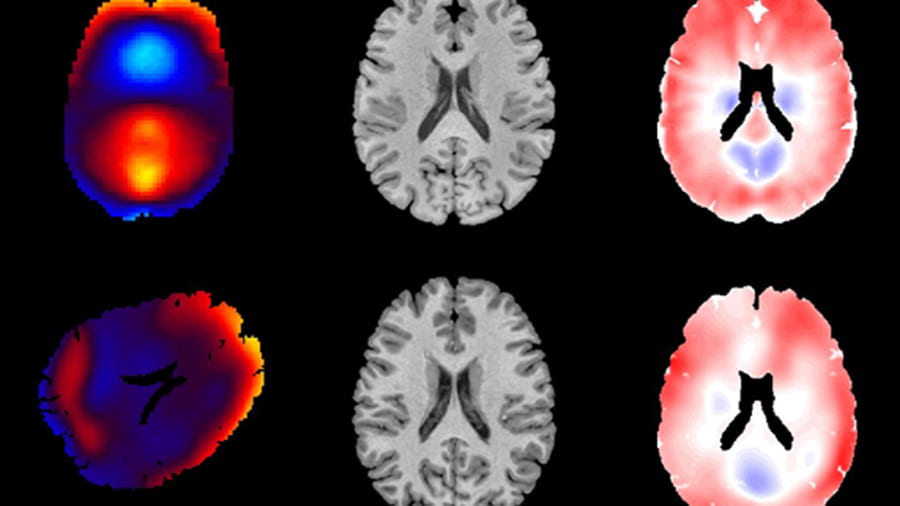When the human head experiences any kind of movement — from nodding yes or no to heading a soccer ball or being jolted in a car crash — the brain moves inside the skull, leading to deformation of the tissue. Such deformations are key to understanding traumatic brain injury but are challenging to study since the brain is hidden inside the skull.
Philip V. Bayly, PhD, the Lee Hunter Distinguished Professor and chair of the Department of Mechanical Engineering & Materials Science at the McKelvey School of Engineering at Washington University in St. Louis, and Jordan D. Escarcega, a mechanical engineering doctoral student in Bayly’s lab, led a multi-institutional team to compare how the human brain deforms in response to movement using two types of magnetic resonance imaging (MRI). Their work is published in the August issue of the ASME Journal of Biomechanical Engineering.

The researchers measured the impulse response of the brain — its natural reaction to impact — and its harmonic response, or response to skull vibration at a particular frequency, similar to the experience of driving on rumble strips on the side of the road.
In the first case, the human volunteers’ heads were resting in a cradle while undergoing tagged MRI imaging. The volunteers were asked to gently rotate their head side to side — as if shaking their head “no” — until the cradle stopped the movement, which created the impulse response. To see the impulse response of the brain in tagged MRI, a grid of lines is superimposed over the MR image of the moving brain to see the deformation of the brain when the volunteer’s head was stopped by the cradle.
